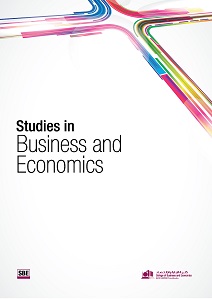Effectiveness of monetary and fiscal policies: the case of Qatar
Abstract
The controversy surrounding the effectiveness of monetary and fiscal policies is a long way from being settled. During the last three decades, oil revenues have contributed significantly to economic growth and development in Qatar, where the public sector has a substantial share in aggregate output. Judging the effectiveness of monetary and fiscal policies using a reduced form equation reveals a more effective role for fiscal policy in determining the behavior of gross national product. We would expect this role to diminish in the coming few years as financial markets develop and more financial and money market instruments are introduced.
Metrics
Metrics Loading ...
##plugins.themes.bootstrap3.article.details##
Keywords
Monetary and fiscal Policies
References
• Almigrin, Abbas (1990). "A Comparative Study of Monetary Policy Instruments in GCC." Journal of Cooperation, vol. 22, p. 13-56.
• Almon, Shirley (1965). "The Distributed Lag Between Capital Appropriation and Expenditures," Econometrica, vol.33 (January), 178-196.
• Andersen, L., and J. Jordan (1968). "Monetary and Fiscal Action: A Test of their Importance in Income Stabilization." Federal Reserve Bank of St. Louis Review (November), 11-24.
• Ando, Albert, and Franco Modigliani (1965). "The Relative Stability of Monetary Velocity and the Multiplier." American Economic Review, September, 3, 693-728
• Batten, D, and D. Thorton (1983). "Polynomial Distributed Lags and the Estimation of the St. Louis Equation." Review of the Federal Reserve Bank of St. Louis, 65 (April), 13-25.
• Bernanke, Ben, and Alan Blinder (1989). ""The Federal Funds Rate and the Channels of Monetary Transmission." Working Paper, no.89-10, Federal Reserve Bank ofPhiladelphia, February.
• Bernanke, Ben, and Alan Blinder (1992). " The Federal Fund Rate and the Channels of Monetary Transmission." American Economic Review, LXXXII, 901-921.
• Bernanke, Ben, and Ilian Mihov (1998). "Measuring Monetary Policy." Quarterly Journal of Economics, issue 3 (August), 869-902.
• Doornik, Jurgen, and David Hendry ( 1992). PC-Give, version 7. Oxford: University of Oxford.
• Enders, Walter (1995). Applied Econometric Time Series. New York: John Wiley and Sons, inc.
• Friedman, Milton, and Anna Schwartz (1963). A Monetary History of the United States, 1867-1960. Princeton: Princeton University Press.
• Friedman, Milton, and David Meiselman (1963). "The Relative Stability of Monetary Velocity and the Investment Multiplier in the United States, 1897-1958." In: Stabilization Policies. Englewood Cliffs: Prentice-Hall.
• Kahn, George (1991). "Does More Money Mean More Bank Loans?" Economic Review, Federal Reserve Bank of Kansas City, July/August, 21-32.
• Kretzmer, Peter (1992). "Monetary vs. Fiscal Policy: New Evidence on an Old Debate." Economic Review, Federal Reserve Bank of Kansas City, vol.77, no.2, 21-30.
• Lardaro, L. (1993). Applied Econometrics. New York: Harper Collins College Publishers. MEED, July, 1999.
• Morgan, Donald (1992). "Are Bank Loans a Force in Monetary Policy?" Economic Review, Federal Reserve Bank of Kansas City, vol. 77, no.2, 31-42.
• Romer, Christina, and David Romer (1990). "New Evidence on the Monetary Transmission Mechanism." Brookings Paper on Economic Activity, no. 1.
• Serletis, Apostolos, and Zisimos Koustas (1998). "International Evidence on the Neutrality of Money." Journal ofMoney, Credit and Banking, vol.30, no.!, 1-25.
• Waud, Roger (1974). "Monetary and Fiscal Effects on Economic Activity: a Reduced Form Examination of Their Relative Importance," Review of Economics and Statistics, (May), 177-87.
• Almon, Shirley (1965). "The Distributed Lag Between Capital Appropriation and Expenditures," Econometrica, vol.33 (January), 178-196.
• Andersen, L., and J. Jordan (1968). "Monetary and Fiscal Action: A Test of their Importance in Income Stabilization." Federal Reserve Bank of St. Louis Review (November), 11-24.
• Ando, Albert, and Franco Modigliani (1965). "The Relative Stability of Monetary Velocity and the Multiplier." American Economic Review, September, 3, 693-728
• Batten, D, and D. Thorton (1983). "Polynomial Distributed Lags and the Estimation of the St. Louis Equation." Review of the Federal Reserve Bank of St. Louis, 65 (April), 13-25.
• Bernanke, Ben, and Alan Blinder (1989). ""The Federal Funds Rate and the Channels of Monetary Transmission." Working Paper, no.89-10, Federal Reserve Bank ofPhiladelphia, February.
• Bernanke, Ben, and Alan Blinder (1992). " The Federal Fund Rate and the Channels of Monetary Transmission." American Economic Review, LXXXII, 901-921.
• Bernanke, Ben, and Ilian Mihov (1998). "Measuring Monetary Policy." Quarterly Journal of Economics, issue 3 (August), 869-902.
• Doornik, Jurgen, and David Hendry ( 1992). PC-Give, version 7. Oxford: University of Oxford.
• Enders, Walter (1995). Applied Econometric Time Series. New York: John Wiley and Sons, inc.
• Friedman, Milton, and Anna Schwartz (1963). A Monetary History of the United States, 1867-1960. Princeton: Princeton University Press.
• Friedman, Milton, and David Meiselman (1963). "The Relative Stability of Monetary Velocity and the Investment Multiplier in the United States, 1897-1958." In: Stabilization Policies. Englewood Cliffs: Prentice-Hall.
• Kahn, George (1991). "Does More Money Mean More Bank Loans?" Economic Review, Federal Reserve Bank of Kansas City, July/August, 21-32.
• Kretzmer, Peter (1992). "Monetary vs. Fiscal Policy: New Evidence on an Old Debate." Economic Review, Federal Reserve Bank of Kansas City, vol.77, no.2, 21-30.
• Lardaro, L. (1993). Applied Econometrics. New York: Harper Collins College Publishers. MEED, July, 1999.
• Morgan, Donald (1992). "Are Bank Loans a Force in Monetary Policy?" Economic Review, Federal Reserve Bank of Kansas City, vol. 77, no.2, 31-42.
• Romer, Christina, and David Romer (1990). "New Evidence on the Monetary Transmission Mechanism." Brookings Paper on Economic Activity, no. 1.
• Serletis, Apostolos, and Zisimos Koustas (1998). "International Evidence on the Neutrality of Money." Journal ofMoney, Credit and Banking, vol.30, no.!, 1-25.
• Waud, Roger (1974). "Monetary and Fiscal Effects on Economic Activity: a Reduced Form Examination of Their Relative Importance," Review of Economics and Statistics, (May), 177-87.
How to Cite
Awad, Talib, and Saif S. Al Sowaidi. 2005. “Effectiveness of Monetary and Fiscal Policies: The Case of Qatar”. Studies in Business and Economics (SBE) 11 (1). https://doi.org/10.29117/sbe.2005.0008.
Section
Articles

